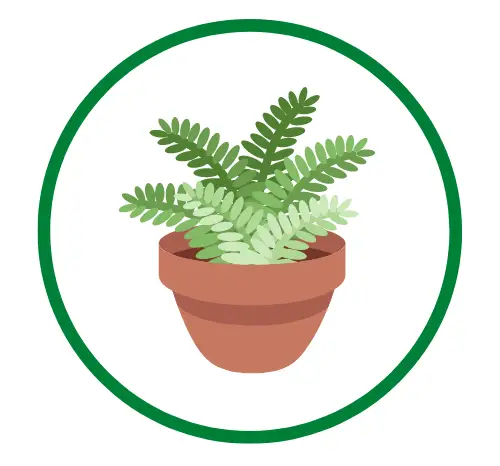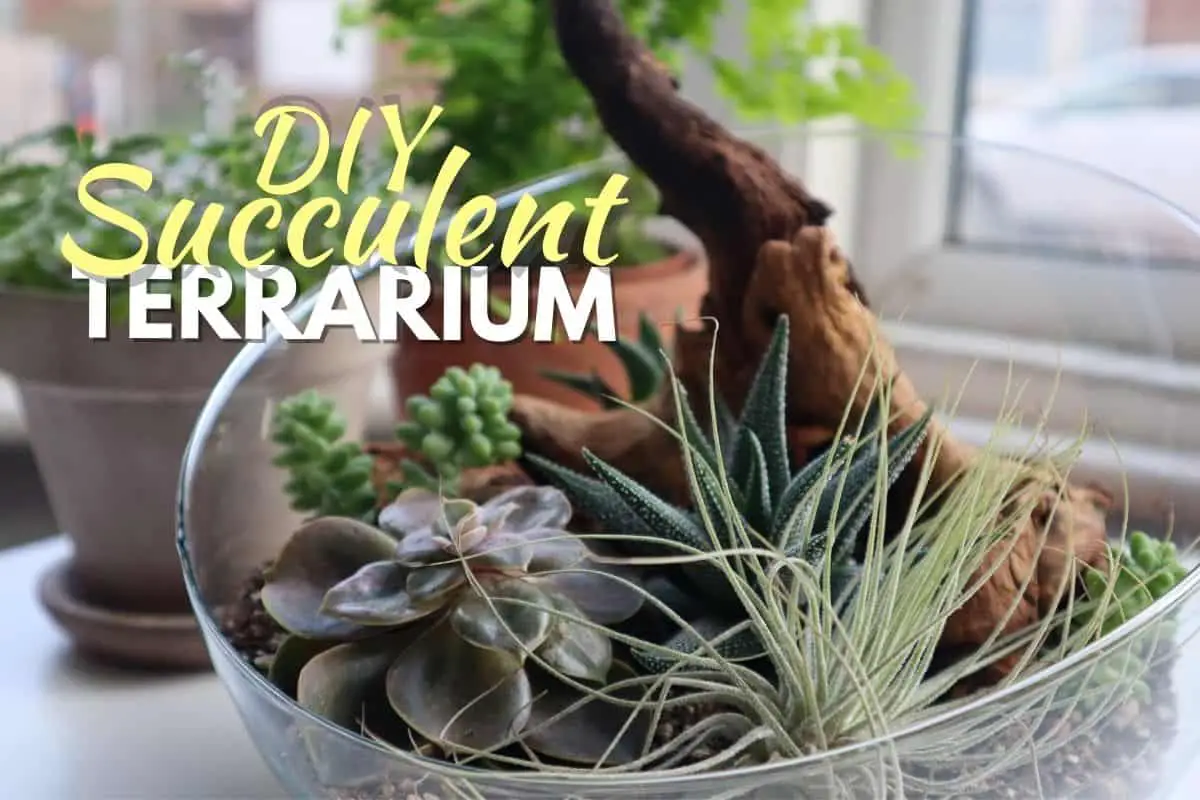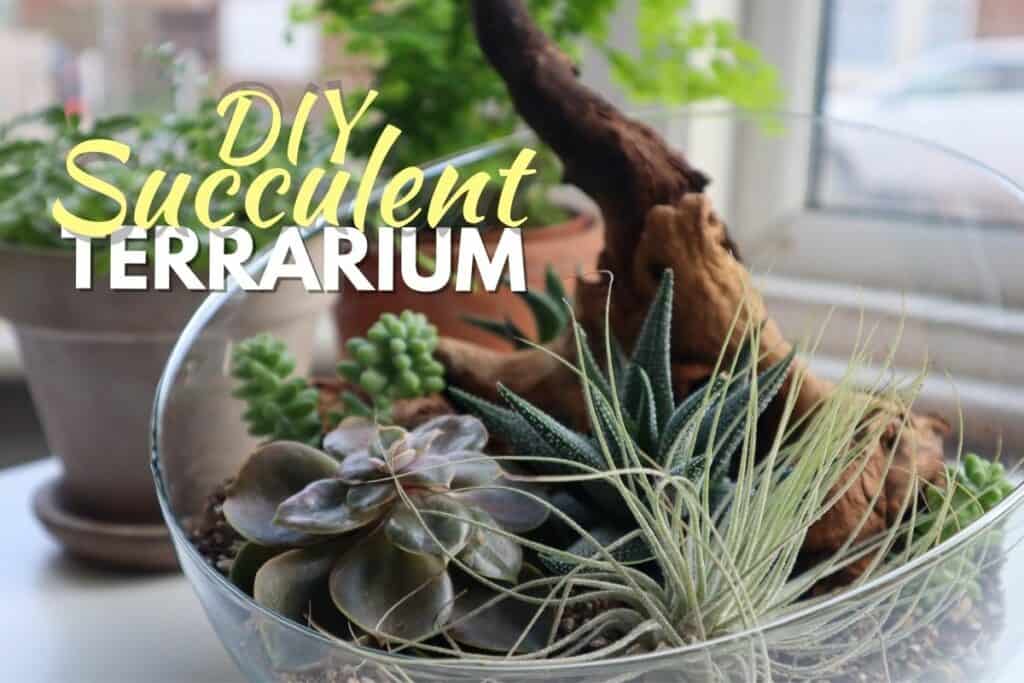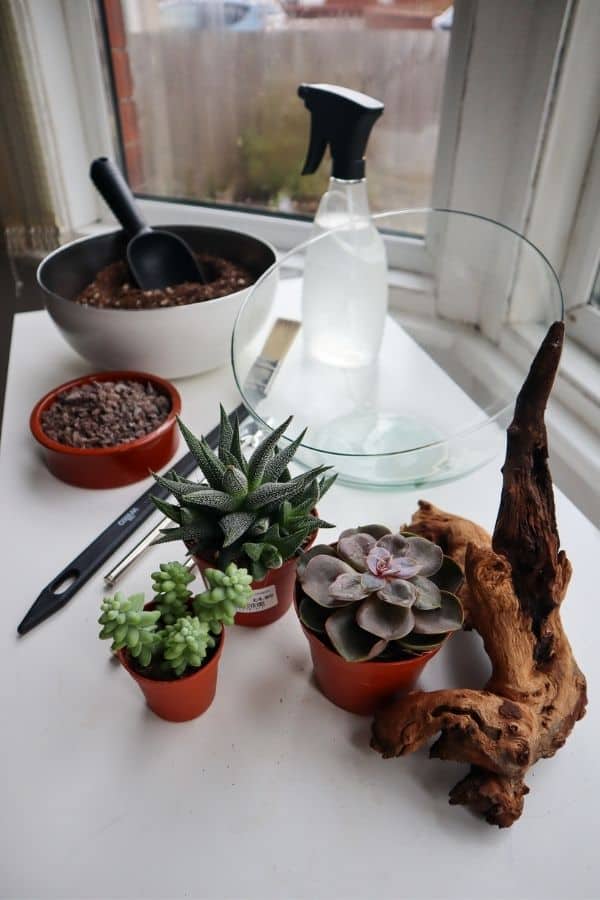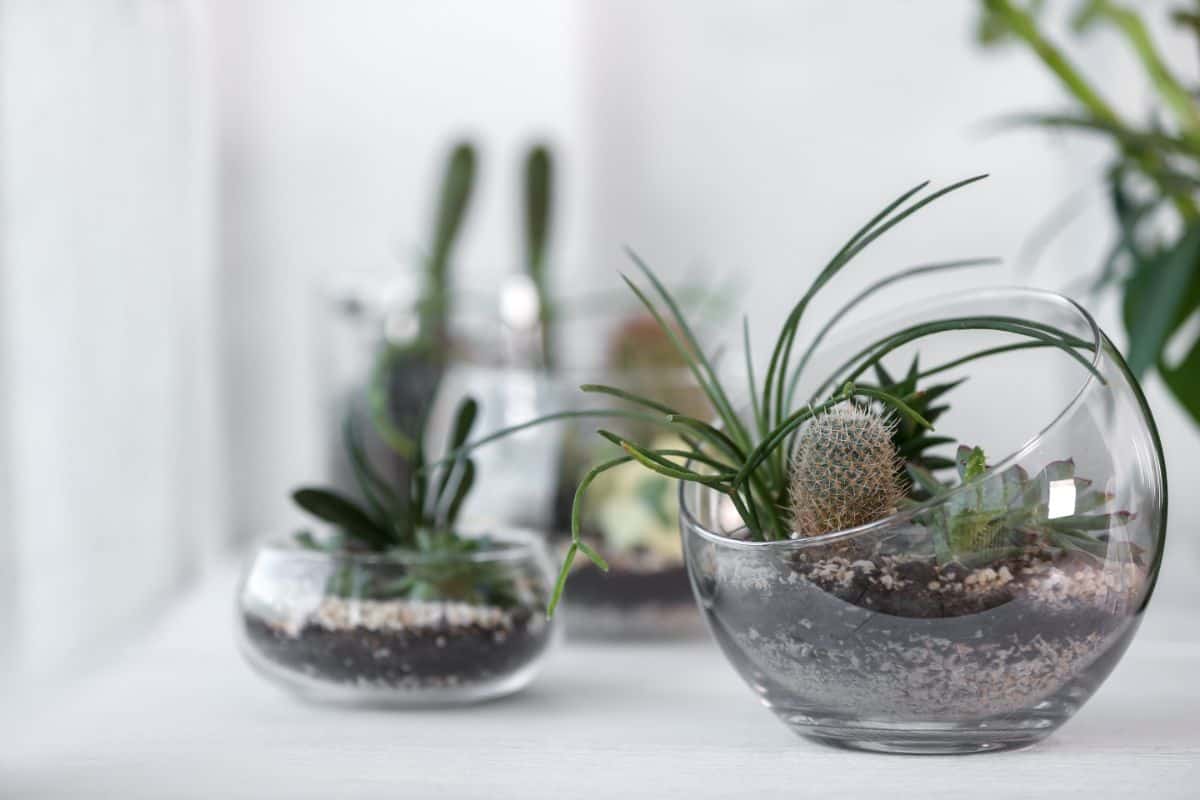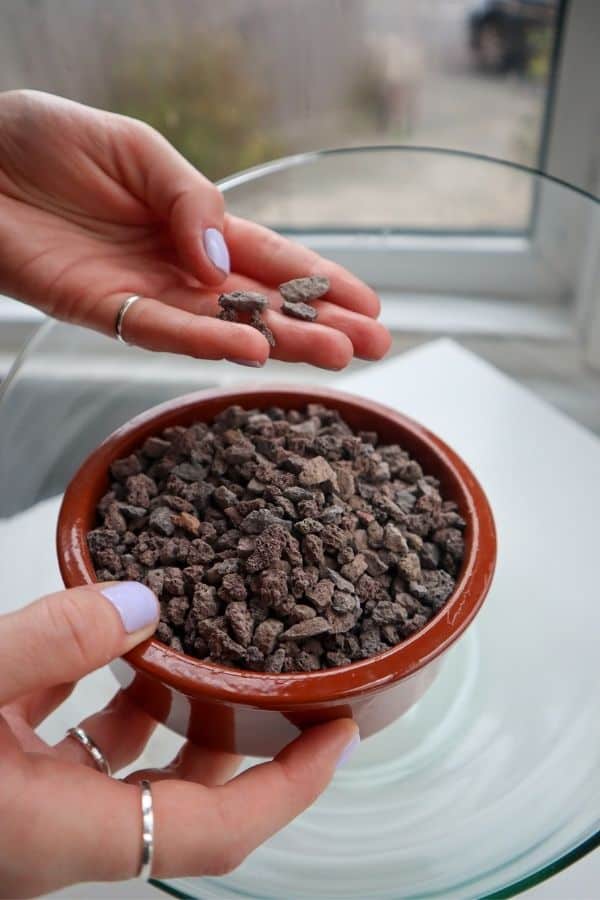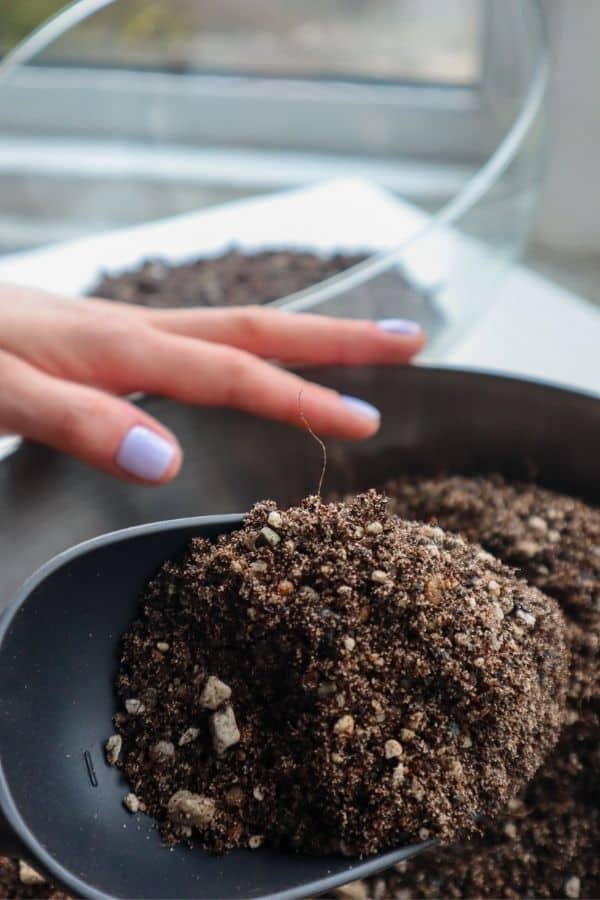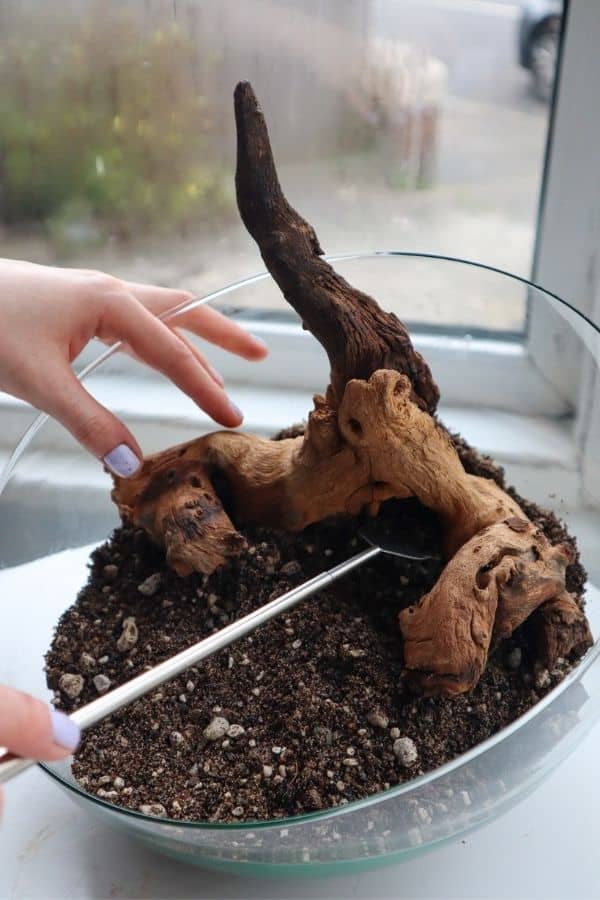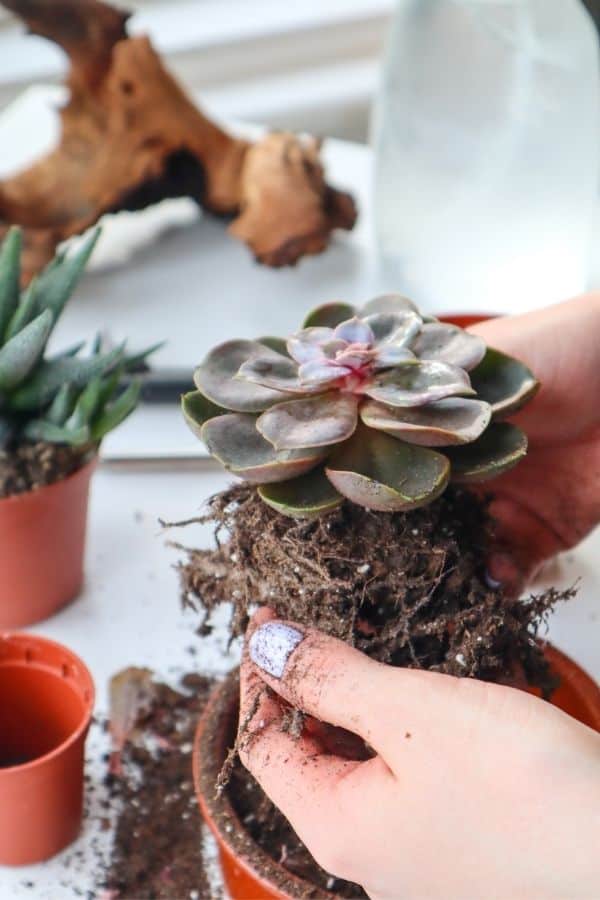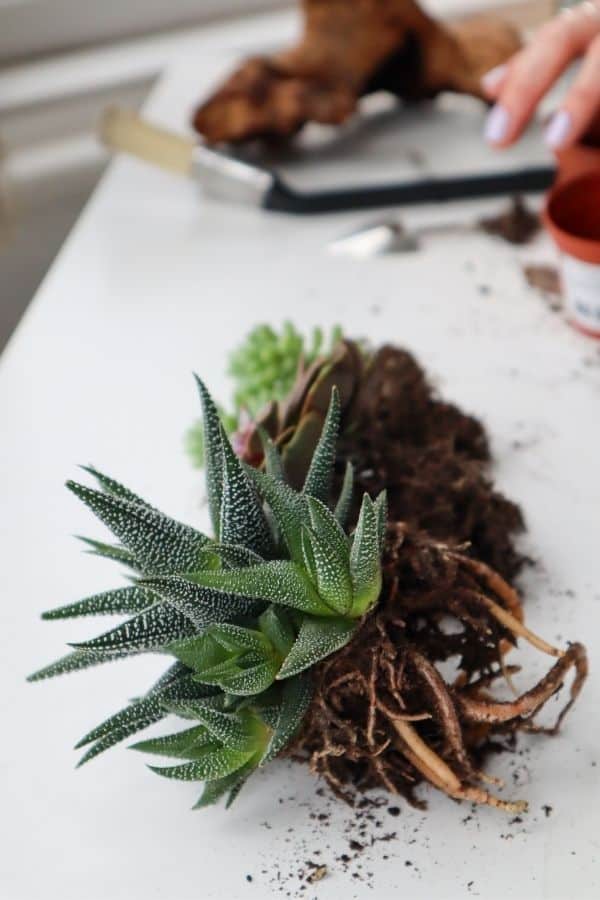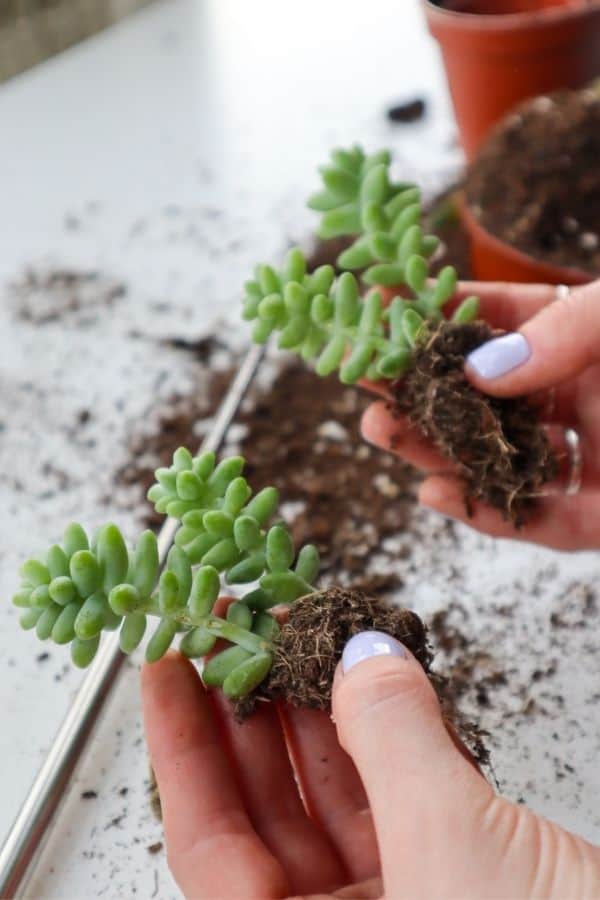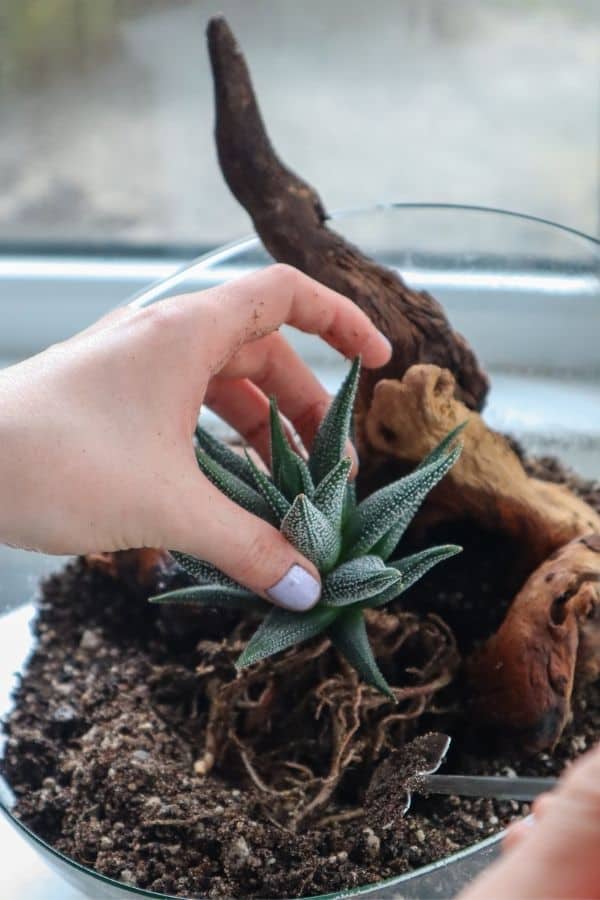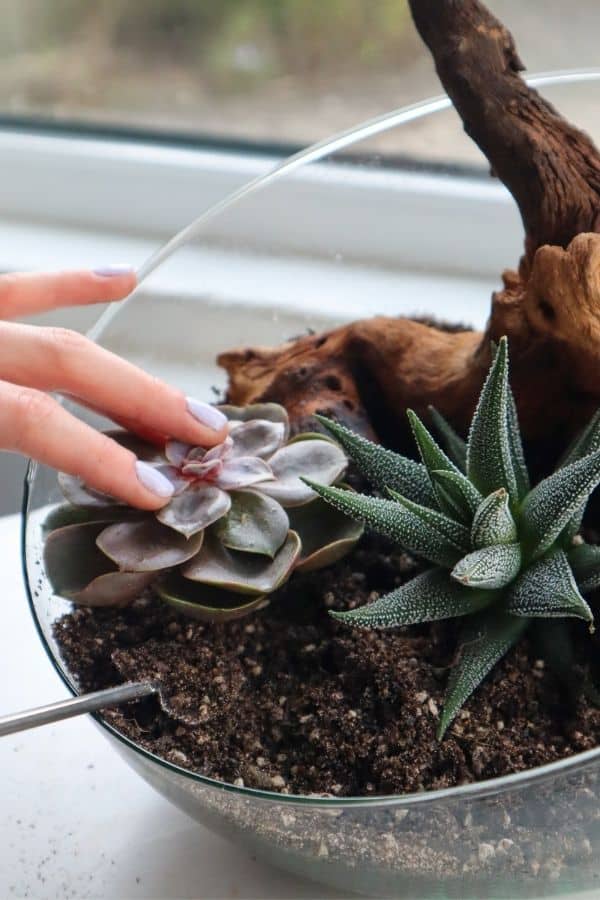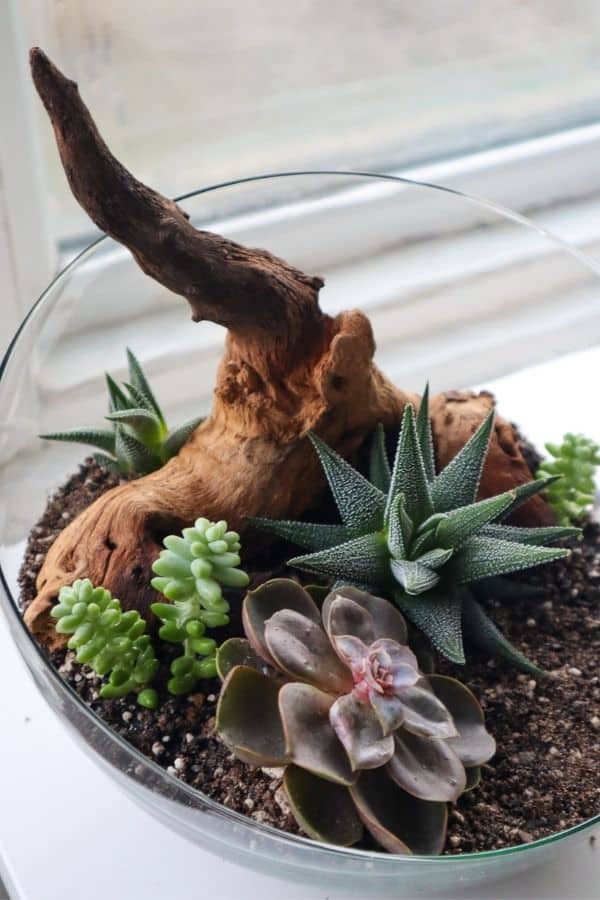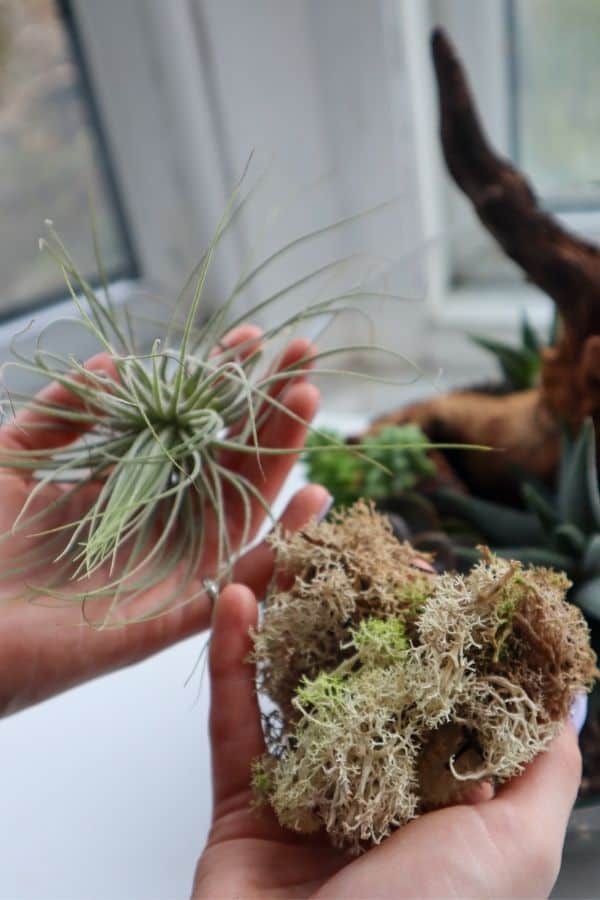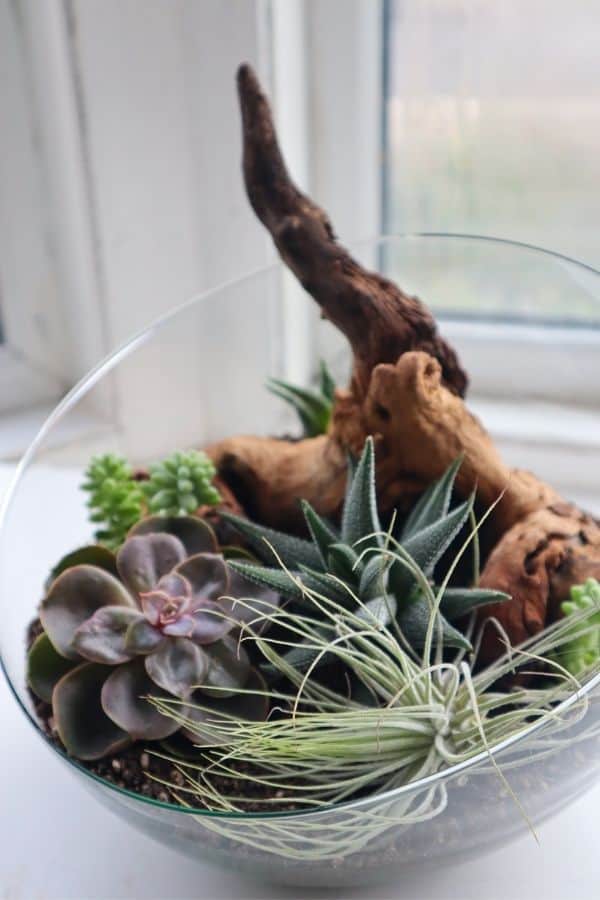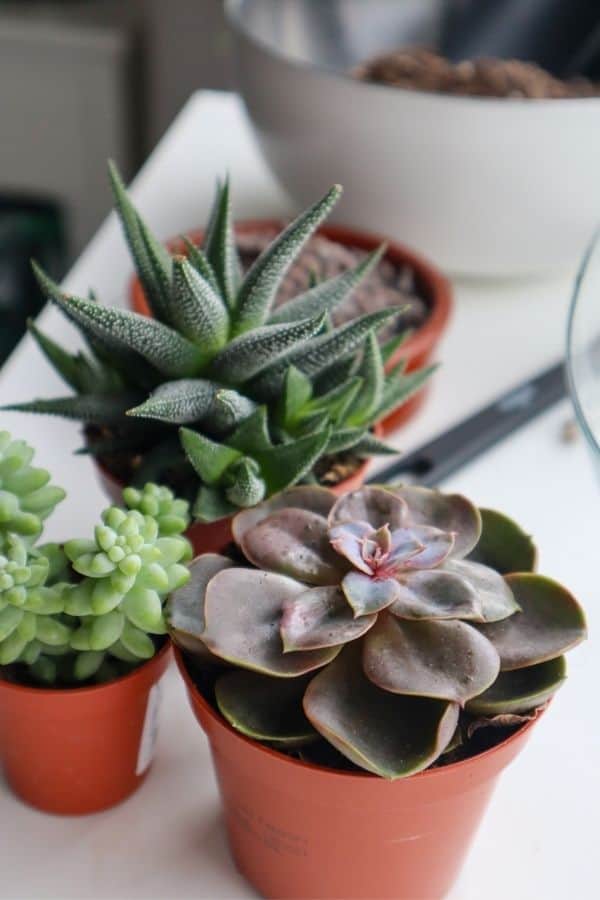How to Make a Succulent Terrarium? Step By Step Guide
The succulent terrarium is a fresh take on an old classic gardening.
The terrarium environment is the absolute worst for succulent growth and development. Avoid using a succulent terrarium if you want to keep your plants happy and healthy and keep them in the proper containers.
Therefore, we’ll walk you through every step of the process in this guide. From choosing the right plant and substrate to the crucial planting advice that will really make the whole thing pop.
Here are some tips for making your terrarium a huge success!
This page may contain affiliate links that allow us to make a small commission (at no further cost to yourself). 💚 Thank you for helping to support the tribe!
Layers of Diy Succulent Terrarium Plants (Step-by-Step)
First things first, let’s confirm that the kind of terrarium we’re making is something we both agree on.
An open terrarium is the only option when it comes to succulent terrarium ideas for any DIY project.
Succulents shouldn’t be kept in closed terrariums at all. These dry desert plants would perish quickly in a traditional jar terrarium’s high moisture and humid environment.
We decided on an open glass container with a curved slope for this reason. This type of dish can offer a lot of volume and airflow along with a pleasing viewing angle.
After saying all of that, let’s begin the construction!
Terrarium Container
Cacti and other great succulents are native to extremely hot regions of the world. They, therefore, need adequate air exchange and low humidity levels.
As a result, if you want to make a succulent terrarium, you must select an open container. For a few smaller plants, a small enclosed terrarium with an opening might also work. You can select from a variety of terrarium container shapes, including:
- Aquarium jar
- A large cup of wine (possibly stemless)
- Soup bowl
- Geometric-shaped containers
- Wardian case with an opening window
- Footed glass bowls (fruit bowls for example)
- Desert/trifle/compote bowls
- Glass orbs like this
And many more low maintenance… When choosing a container for your succulent terrarium, make sure it is a mostly open container. Don’t choose cloche, lidded cookie jars, or similar for your succulent terrarium. They won’t allow proper air exchange and will kill the more plants quickly.
Drainage Layer
A succulent terrarium must have reliable drainage (pebbles) .
Succulents, after all, are more susceptible to overwatering than even your fussiest tropical most plants. Between waterings, they need to dry out, and they detest sitting on a soggy substrate.
In this situation, a drainage layer can be useful (also known as a false bottom).
We can prevent the substrate from oversaturating and prevent the roots of the plants from rotting by placing a layer of river rocks or gravel at the bottom of the terrarium. This will also create a reservoir where any excess water can freely drain away.
Depending on the size of your container, 1 to 2 inches of gravel should be sufficient.
However, if you treat these like your tropical houseplants, no amount of terrarium layer will be able to save you; the proper watering technique is still the key to happy plants inside.
Soil / Substrate
Your choice of substrate is important because we’re still on the drainage theme here.
Seriously, your standard potting soil or tropical terrarium mix won’t do. For arid plants, you must purchase (or make) a specialized mix.
Consider a grittier mixture if drainage is your top concern.
Mine consists of coco coir, pumice, activated charcoal, horticultural sand, and a trace amount of worm castings.
Hardscape
Any additional natural structural elements are referred to as “hardscape.”
I believe it to be crucial for a succulent terrarium (or any terrarium for that matter).
It’s what gives a scene dynamic shapes and transforms a straightforward arrangement of succulents in a dish into something truly artistic. Look for textured rocks and gnarled hardwoods.
Even though we tried a few different combinations, this piece of Mopani Wood just seemed to fit so well.
Plants
Preparation
Before you get into the enjoyable part, a little plant preparation goes a long way.
First, it might be a good create idea to remove some of the substrates your succulents are currently planted in. We can’t always be certain of what it is, and a smaller plants roots ball will be simpler to plant.
You might be able to divide some of your chosen succulents into smaller plants, depending on your selection. By doing this, you can get some smaller accent plants as well as a more manageable size for your main plants.
Win-win!
We first noticed some pups sprouting on the edges of our Haworthia (the spiky one). With some gentle pressure and firm pressure, these can be twisted off.
Setting Up
Now for the enjoyable part!
If you like, you can try lightly misting your substrate with a spray bottle. It can facilitate planting by enhancing the substrate’s malleability.
The next step is to make a depression in the substrate that is just big enough to fit the plant’s root ball. A spoon will do just fine, but we use a tiny telescopic spade.
The Haworthia entered first. It will take center stage in the soil’s deepest (inches deep) layer because it is the biggest plant (even without the pups).
The stunning rosette of the Echeveria “Magic Red” follows.
This really only fits in one place, but it looks great next to the first succulent. The various colors and shapes work well together.
Our accent plants are added last.
To add some verticality and frame the main other plants, we use 3 Sedum Burritos (since odd numbers give a more natural look).
Then, in order to utilize the space, we placed one of our Haworthia pups at the back.
Highlights
Here, we add the finishing touches to complete the picture.
You may have also noticed that we still have some room up front.
Now, it’s not necessary for the potting soil to be completely covered. Everything comes down to personal preference (and succulent terrariums can easily end up too crowded).
But since this area is quite large, I want to add something new to it to make it more interesting.
Good options include:
- More hardscape, e.g., rocks or smaller branches like Spiderwood.
- Different plants, e.g., Air plant or cacti.
- Preserved moss (live moss wouldn’t work in an open container).
- Shells, crystals, or figurines.
We chose the Tillandsia magnusiana air plant because of how well the thin, floaty tendrils contrast with the substantial succulent leaves.
If you’d like, you could also add a top dressing of sand or gravel, but we don’t think it’s necessary in this case.
Get Creative with Sand Art Instead of using plain sand on the bottom, try layering some colored sand to make beautiful sand art!
We now have it! All done.
Choosing Succulent Terrarium Ideas
Now that we’ve mastered the planting and construction process, we’ll discuss how to pick succulents for terrariums.
There are literally thousands of potential options available.
Fortunately, a lot of them work well in succulent terrarium. What to watch out for is listed here:
- You want as much variety as you can get in terms of shape, color, and texture. A succulent arrangement that looks dynamic relies heavily on contrast.
- The best succulents are the smallest. Some do in fact get quite big and can easily quickly outgrow their terrarium.
- It’s crucial to choose plants that require comparable maintenance. Although succulents make it fairly simple, there is a lot of species overlap.
Some of the Best Succulents for Terrariums
The selection of fantastic succulents can be a little overwhelming.
Here are a few examples to help you choose the ideal succulents for your terrarium project.
The lovely rosettes of the Echeveria and Sempervivum, also known as Hens and Chicks, are a wonderful place to start. They contrast well with the prickly leaves of the Agave and Haworthia plants.
Senecio rowleyanus, also known as the String of Pearls, is a lovely option for a succulent vine that cascades.
The Sedum (Burro’s Tail) group, Crassula Jade Plants, and Kalanchoe Paddle Plants can then be used to add some verticality to your arrangement and prevent it from looking flat.
Sincerely, I don’t believe you can go wrong by selecting a variety of small, diverse succulents. They will probably all cooperate if they all remain small.
How to Proper Care for a Succulent Terrariums
Lighting Requirements
Succulents generally require a lot of light.
Species-specific needs will vary slightly, but the majority of plants will thrive with (at least) a few hours of direct sunlight and a lot of bright indirect light spread out throughout the day.
You should learn as much as you can about your chosen species, but you probably won’t go overboard.
Therefore, a diy succulent terrarium should be placed on a sunny windowsill that receives direct sunlight, such as those on the east and south sides of a building.
How to Water Succulents
Seeing as succulents need so much full sun, they should dry out pretty quickly.
The substrate should be watered once it is completely dry.
With just a drainage layer instead of a drainage hole, you need to be a little less aggressive when watering terrarium succulents than you would with potted succulents.
Spraying is effective, but you should make sure all the water is getting to the plants roots of your succulents as well as avoid frequently misting their leaves. I prefer to liberally spray the succulents until they are evenly moist, ideally around the base of the plants.
Another option is small amount watering cans, which can better direct the water, but you still run the risk of quickly going overboard.
The frequency of watering will depend on a variety of variables. based on the amount of water you add, the relative humidity, and the brightness of your light. But I would anticipate watering every 4 to 7 days.
Summary
After creating your succulent terrarium, putting it in a bright area away from direct light. Once the rootball and the soil have been thoroughly sprayed, you shouldn’t need to water your terrarium plants for a week. Allow adequate ventilation, but avoid placing in an area with frequent drafts.
